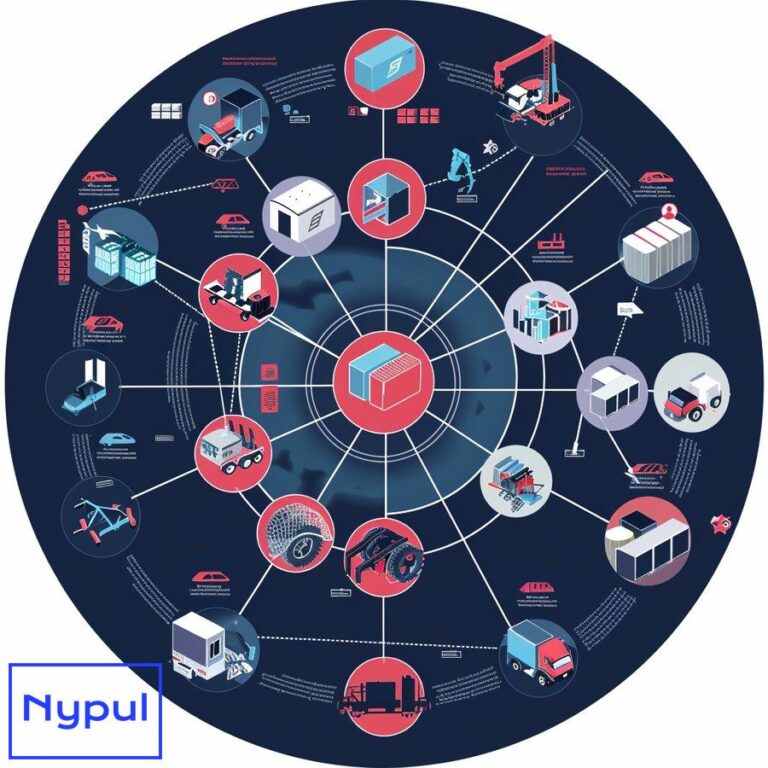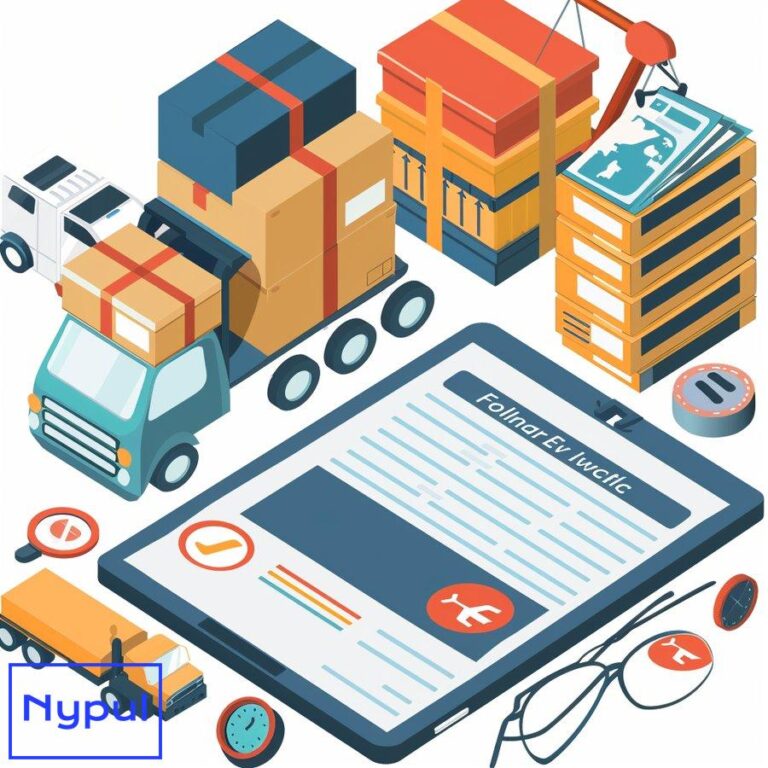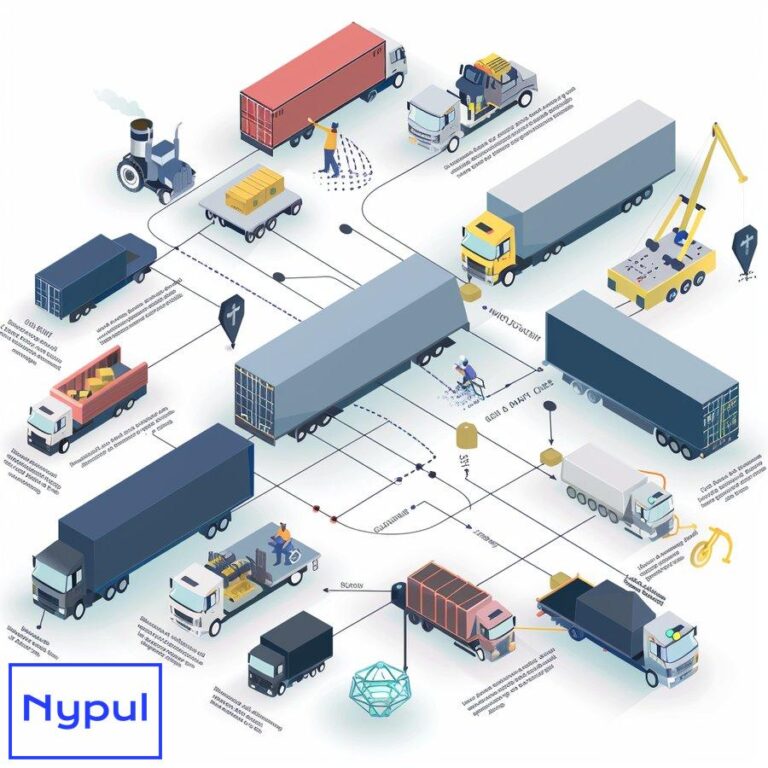What Is Automated Commercial Environment Ace
What is the Automated Commercial Environment (ACE)?
The Automated Commercial Environment (ACE) stands as the primary system through which the trade community reports imports and exports and the government determines admissibility. ACE serves as a single window for all trade processing, enabling the efficient collection, processing, and sharing of trade data across government agencies.
ACE represents a significant advancement in the U.S. Customs and Border Protection’s (CBP) efforts to modernize trade operations. This system replaces the older Automated Commercial System (ACS), offering enhanced functionality and improved user experience for all stakeholders involved in international trade.
At its core, ACE is a complex, integrated information technology system designed to facilitate legitimate trade while strengthening border security. The system allows for the electronic submission of import and export data, automates manual processes, and provides real-time access to trade information.
Key Features of ACE
Electronic Data Interchange: ACE enables the seamless exchange of information between trade participants and government agencies. This feature significantly reduces paperwork and expedites the clearance process.
Risk Assessment: The system incorporates advanced risk management tools that help CBP and other government agencies identify high-risk shipments while facilitating the smooth flow of low-risk cargo.
Account Management: ACE provides users with comprehensive account management capabilities, allowing them to track their trade activities, manage payments, and access important trade-related information.
Reporting and Analytics: The system offers robust reporting and analytics features, enabling both government agencies and trade participants to gain valuable insights into trade patterns and trends.
Understanding ACE’s role in the U.S. trade ecosystem is crucial for businesses engaged in international commerce. The system’s impact extends beyond mere data processing; it fundamentally reshapes how trade operations are conducted, compliance is managed, and security is maintained at the nation’s borders.
How does ACE streamline U.S. trade processing?
ACE revolutionizes U.S. trade processing by introducing a host of streamlined procedures and automated functionalities. This comprehensive system addresses various aspects of trade operations, significantly reducing processing times and enhancing overall efficiency.
Centralized Data Submission
ACE provides a single portal for submitting all required import and export data. This centralization eliminates the need for multiple submissions to different agencies, reducing redundancy and the potential for errors. Traders can now submit their information once, and the system distributes it to all relevant government agencies.
Automated Risk Assessment
The system employs sophisticated algorithms to assess the risk level of incoming shipments. This automated risk assessment allows CBP to focus its resources on high-risk cargo while expediting the clearance of low-risk shipments. Consequently, legitimate trade flows more smoothly, and potential threats are identified more effectively.
Real-Time Processing
ACE enables real-time processing of trade data, allowing for immediate feedback on submissions. This feature significantly reduces wait times and allows for quick resolution of any issues that may arise during the import or export process.
Interagency Collaboration
The system facilitates seamless collaboration between various government agencies involved in trade regulation. By sharing information in real-time, ACE helps eliminate duplicative efforts and ensures consistent application of trade rules across different agencies.
Electronic Payments
ACE integrates electronic payment capabilities, allowing traders to settle duties, taxes, and fees online. This feature streamlines the payment process, reducing processing times and minimizing the risk of payment-related delays.
Automated Validations
The system performs automated validations on submitted data, instantly flagging any inconsistencies or errors. This feature helps traders identify and correct issues promptly, reducing the likelihood of delays due to data discrepancies.
Document Imaging System (DIS)
ACE incorporates a Document Imaging System that allows for the electronic submission of supporting documents. This capability significantly reduces the need for paper-based processes, speeding up document review and reducing storage requirements.
Impact on Processing Times
The streamlining effects of ACE have led to substantial improvements in processing times. The following table illustrates the average processing times before and after ACE implementation:
| Process | Pre-ACE Average Time | Post-ACE Average Time | Improvement |
|---|---|---|---|
| Entry Summary Filing | 4 hours | 30 minutes | 87.5% |
| Cargo Release | 24 hours | 2 hours | 91.7% |
| Export Declaration | 2 days | 2 hours | 95.8% |
| Payment Processing | 3 days | Same day | 100% |
These improvements demonstrate the significant impact ACE has on expediting trade processes, benefiting both the government and the trade community.
What are the core components of ACE?

The Automated Commercial Environment (ACE) is a complex system composed of several interconnected components, each serving a specific function in the trade process. Understanding these core components is essential for traders and government agencies to effectively utilize the system.
ACE Secure Data Portal
The ACE Secure Data Portal serves as the primary interface for users to access ACE functionalities. This web-based platform provides a single point of access for trade participants to submit and retrieve information, manage their accounts, and interact with CBP and other government agencies.
Key features of the ACE Secure Data Portal include:
Account Management: Users can manage their trade accounts, update profile information, and track their trade activities.
Reports: The portal offers a wide range of customizable reports, allowing users to analyze their trade data and compliance history.
Electronic Messaging: Users can send and receive messages related to their trade transactions directly through the portal.
Automated Broker Interface (ABI)
The Automated Broker Interface is a critical component of ACE that allows customs brokers and self-filers to electronically submit import data to CBP. ABI facilitates the rapid processing of entries and enables real-time communication between filers and CBP.
ABI functionalities include:
Entry Filing: Brokers can submit entry summaries and associated data electronically.
Status Updates: Users receive real-time updates on the status of their submissions.
Query Capabilities: ABI allows users to query CBP databases for information on tariffs, quotas, and other trade-related data.
Automated Export System (AES)
The Automated Export System is the electronic system for collecting Electronic Export Information (EEI) from exporters. AES is fully integrated into ACE, streamlining the export process and ensuring compliance with export regulations.
Key features of AES include:
EEI Filing: Exporters can submit their export information electronically.
Validation: The system performs real-time validations of submitted data, reducing errors and compliance issues.
Shipment Tracking: Users can track the status of their export shipments through the system.
Cargo Systems Messaging Service (CSMS)
The Cargo Systems Messaging Service is ACE’s primary communication tool for disseminating critical information to the trade community. CSMS provides timely updates on system changes, policy updates, and operational issues.
CSMS functionalities include:
Targeted Messaging: Users can subscribe to specific message categories relevant to their operations.
Archive Access: The system maintains an archive of past messages for reference.
Multi-Channel Delivery: Messages can be delivered via email, text message, or through the ACE portal.
Document Image System (DIS)
The Document Image System allows for the electronic submission and processing of trade-related documents. DIS significantly reduces paper-based processes and expedites document review.
Key features of DIS include:
Document Upload: Users can upload various types of supporting documents electronically.
Automated Routing: The system automatically routes documents to the appropriate CBP personnel for review.
Status Tracking: Users can track the status of their submitted documents in real-time.
Interoperability
ACE’s interoperability component enables seamless data exchange between ACE and other government agency systems. This feature ensures that trade data is efficiently shared across all relevant agencies involved in the trade process.
Interoperability features include:
Data Synchronization: Ensures that trade data is consistently updated across all connected systems.
Cross-Agency Workflows: Facilitates coordinated processing of trade transactions involving multiple agencies.
Standardized Data Formats: Utilizes standardized data formats to ensure compatibility across different systems.
Understanding these core components of ACE is crucial for effectively navigating the system and maximizing its benefits in trade operations. Each component plays a vital role in streamlining processes, enhancing communication, and ensuring compliance in international trade.
How can businesses access and implement ACE?
Accessing and implementing the Automated Commercial Environment (ACE) is a crucial step for businesses engaged in international trade with the United States. The process involves several stages, from initial registration to full integration with existing business systems.
ACE Account Creation
The first step in accessing ACE is creating an account. This process is managed through the ACE Secure Data Portal.
Steps for account creation:
1. Visit the CBP Website: Navigate to the official U.S. Customs and Border Protection website.
2. Access the ACE Portal: Locate the ACE Secure Data Portal section.
3. Complete Registration: Fill out the online registration form, providing necessary business information.
4. Verification: Wait for CBP to verify the provided information.
5. Receive Credentials: Upon approval, receive login credentials for the ACE portal.
User Roles and Permissions
ACE employs a robust system of user roles and permissions to ensure data security and appropriate access levels.
Common user roles include:
Trade Account Owner: Has full access to the account and can manage other users.
Proxy Trade Account Owner: Can perform most account management functions.
Portal User: Has limited access based on assigned permissions.
Training and Education
CBP offers various training resources to help businesses effectively use ACE.
Available training options:
Online Tutorials: Self-paced learning modules covering various ACE functionalities.
Webinars: Live online sessions focusing on specific ACE features or updates.
In-Person Training: Occasional workshops and seminars conducted by CBP officials.
System Integration
For businesses looking to fully leverage ACE capabilities, integration with existing systems is crucial.
Integration approaches:
API Integration: Utilize ACE APIs to connect existing business systems directly with ACE.
EDI Implementation: Implement Electronic Data Interchange to facilitate automated data exchange with ACE.
Third-Party Software: Utilize commercial software solutions designed to interface with ACE.
Phased Implementation
Many businesses opt for a phased approach to ACE implementation, gradually adopting different components of the system.
A typical phased implementation might look like this:
| Phase | Focus Area | Typical Duration |
|---|---|---|
| 1 | Account Setup and Basic Portal Use | 1-2 months |
| 2 | ABI Integration for Import Processes | 3-4 months |
| 3 | AES Integration for Export Processes | 2-3 months |
| 4 | Full System Integration and Automation | 4-6 months |
This phased approach allows businesses to gradually adapt to the new system while minimizing disruptions to ongoing operations.
Ongoing Support and Maintenance
Successful ACE implementation requires ongoing support and maintenance.
Key aspects of ongoing support:
Help Desk Access: CBP provides a dedicated help desk for ACE-related issues.
Regular Updates: Stay informed about system updates and policy changes through CSMS.
Compliance Reviews: Conduct regular internal reviews to ensure ongoing compliance with ACE requirements.
Best Practices for ACE Implementation
To ensure smooth ACE implementation, businesses should consider the following best practices:
Designate an ACE Champion: Appoint a team member to lead the implementation process and serve as the primary point of contact for ACE-related matters.
Conduct a Readiness Assessment: Evaluate current systems and processes to identify areas that may need adjustment for ACE compatibility.
Develop a Comprehensive Training Plan: Ensure all relevant staff members receive appropriate training on ACE functionalities.
Start with a Pilot Program: Begin with a small-scale implementation to identify and address any issues before full-scale rollout.
Regularly Review and Optimize: Continuously assess ACE usage and look for opportunities to further streamline processes.
By following these steps and best practices, businesses can effectively access and implement ACE, positioning themselves to fully leverage the system’s capabilities in their international trade operations.
What benefits does ACE offer to stakeholders?
The Automated Commercial Environment (ACE) offers a wide array of benefits to various stakeholders in the international trade ecosystem. These benefits span across different aspects of trade operations, from improved efficiency to enhanced compliance and security.
Benefits for Importers and Exporters
Importers and exporters stand to gain significantly from ACE implementation.
Key benefits include:
Faster Clearance Times: ACE’s automated processes significantly reduce cargo clearance times, allowing for quicker movement of goods.
Reduced Costs: By streamlining processes and reducing paperwork, ACE helps lower operational costs associated with trade transactions.
Improved Visibility: Real-time access to shipment status and trade data enables better planning and decision-making.
Enhanced Compliance: Automated validations and real-time feedback help ensure compliance with trade regulations.
Benefits for Customs Brokers
Customs brokers play a crucial role in facilitating trade, and ACE provides them with powerful tools to enhance their services.
Advantages for brokers include:
Efficient Data Submission: The ability to submit entry data electronically streamlines the filing process.
Improved Client Service: Real-time access to trade data allows brokers to provide more timely and accurate information to their clients.
Automated Validations: ACE’s built-in validations help brokers identify and correct errors before submission, reducing delays and potential penalties.
Benefits for Carriers
ACE offers several advantages to carriers involved in international trade.
Key benefits for carriers:
Simplified Reporting: ACE consolidates various reporting requirements, reducing the administrative burden on carriers.
Faster Cargo Release: Automated risk assessment leads to quicker release of low-risk cargo, improving turnaround times.
Improved Communication: Enhanced communication capabilities with CBP and other agencies facilitate quicker resolution of issues.
Benefits for Government Agencies
ACE significantly enhances the capabilities of government agencies involved in trade regulation and enforcement.
Advantages for government agencies:
Enhanced Risk Management: Advanced analytics and automated risk assessment tools improve the ability to identify high-risk shipments.
Improved Interagency Collaboration: Seamless data sharing across agencies leads to more effective enforcement and compliance efforts.
Data-Driven Decision Making: Access to comprehensive trade data enables more informed policy-making and resource allocation.
Quantifiable Benefits of ACE
The benefits of ACE can be quantified in various ways. The following table illustrates some key metrics that demonstrate the system’s impact:
| Metric | Pre-ACE | Post-ACE | Improvement |
|---|---|---|---|
| Average Entry Processing Time | 4 hours | 30 minutes | 87.5% |
| Paper-Based Transactions | 60% | 10% | 83.3% reduction |
| Data Accuracy Rate | 85% | 98% | 15.3% increase |
| Interagency Communication Time | 48 hours | 2 hours | 95.8% reduction |
| Compliance Rate | 92% | 97% | 5.4% increase |
These metrics underscore the significant improvements ACE brings to various aspects of trade operations.
Long-Term Strategic Benefits
Beyond immediate operational improvements, ACE offers several long-term strategic benefits to stakeholders.
These include:
Competitive Advantage: Businesses that effectively leverage ACE can gain a competitive edge through improved efficiency and compliance.
Scalability: ACE’s robust infrastructure supports business growth and increased trade volumes without compromising efficiency.
Adaptability to Regulatory Changes: The system’s flexibility allows for quicker adaptation to new trade regulations and policies.
Data-Driven Insights: Comprehensive trade data available through ACE enables stakeholders to derive valuable insights for strategic planning.
Environmental Benefits
ACE’s shift towards paperless processes also contributes to environmental sustainability.
Environmental impacts include:
Reduced Paper Usage: Significant reduction in paper-based documentation leads to decreased deforestation and lower carbon footprint.
Lower Transportation Emissions: More efficient trade processes result in reduced idling times for vehicles, lowering overall emissions.
Energy Efficiency: Streamlined processes and reduced physical storage needs contribute to overall energy savings.
By offering these diverse benefits, ACE not only improves the efficiency and effectiveness of trade operations but also contributes to broader goals of economic growth, security enhancement, and environmental sustainability. Stakeholders who fully embrace and leverage ACE’s capabilities stand to gain significant advantages in the competitive landscape of international trade.
How does ACE impact dray## How does ACE impact drayage and logistics operations?
The Automated Commercial Environment (ACE) has a profound impact on drayage and logistics operations, streamlining processes and enhancing efficiency throughout the supply chain.
Improved Visibility and Tracking
![]()
ACE provides real-time visibility into the status of shipments, allowing drayage providers and logistics managers to better plan and coordinate their operations.
Key benefits include:
- Ability to track shipments from entry to final delivery
- Reduced waiting times at ports and terminals
- Improved communication with importers and exporters
Faster Cargo Clearance
The expedited cargo clearance enabled by ACE directly benefits drayage and logistics operations.
Advantages include:
- Quicker turnaround times for drayage trucks
- Reduced demurrage and detention fees
- Improved asset utilization for logistics providers
Enhanced Data Sharing
ACE facilitates seamless data sharing between various stakeholders in the supply chain.
Benefits of enhanced data sharing:
- Improved collaboration between drayage providers and logistics managers
- Reduced data entry errors and inconsistencies
- Ability to proactively identify and address potential issues
Streamlined Compliance
ACE’s automated validations and real-time feedback help ensure compliance with trade regulations, reducing the risk of penalties and delays.
Compliance benefits for drayage and logistics:
- Reduced likelihood of cargo holds due to non-compliance
- Ability to focus on core operations rather than compliance management
- Improved reputation and trust among supply chain partners
Opportunities for Innovation
The efficiencies gained through ACE open up opportunities for drayage and logistics providers to innovate and differentiate their services.
Innovation opportunities include:
- Developing value-added services based on ACE data
- Investing in technology solutions to further streamline operations
- Exploring new business models and revenue streams
Challenges in Adapting to ACE
While ACE offers significant benefits, adapting to the new system also presents challenges for drayage and logistics providers.
Key challenges include:
- Investing in system integration and training
- Adjusting to new processes and workflows
- Ensuring ongoing compliance with evolving ACE requirements
To overcome these challenges, drayage and logistics providers should prioritize early adoption, comprehensive training, and close collaboration with supply chain partners and CBP. By embracing ACE and leveraging its capabilities, these providers can gain a competitive edge and drive innovation in the rapidly evolving world of international trade logistics.
What challenges might users face when adopting ACE?
While the Automated Commercial Environment (ACE) offers numerous benefits, adopting and implementing the system also presents several challenges for users. Understanding these challenges is crucial for businesses to effectively navigate the transition and maximize the system’s potential.

Complexity of the System
ACE is a comprehensive and complex system, encompassing various components and functionalities. This complexity can pose a learning curve for users, especially those unfamiliar with electronic trade systems.
Challenges related to system complexity include:
- Understanding the different components and how they interact
- Configuring the system to align with specific business needs
- Ensuring seamless integration with existing business systems
Training and Change Management
Effective implementation of ACE requires comprehensive training for all relevant staff members. This training must address not only the technical aspects of the system but also the changes in workflows and processes that come with its adoption.
Training and change management challenges include:
- Developing and delivering effective training programs
- Ensuring consistent application of new processes across the organization
- Overcoming resistance to change among staff members
Data Quality and Accuracy
ACE relies on accurate and complete data submissions to function effectively. Ensuring data quality can be a challenge, especially for businesses with complex supply chains or those new to electronic trade systems.
Data quality challenges include:
- Identifying and correcting errors in existing trade data
- Implementing robust data validation processes
- Maintaining data accuracy throughout the trade lifecycle
System Downtime and Maintenance
Like any complex information system, ACE may experience occasional downtime or require maintenance. These disruptions can impact trade operations and lead to delays if not managed effectively.
Challenges related to system downtime and maintenance include:
- Developing contingency plans for system outages
- Communicating maintenance schedules and potential impacts to stakeholders
- Ensuring timely resolution of technical issues
Ongoing Compliance
Maintaining compliance with evolving trade regulations and ACE requirements is an ongoing challenge for businesses. Failure to comply can result in penalties, cargo holds, and reputational damage.
Compliance challenges include:
- Staying informed about changes in trade regulations and ACE requirements
- Implementing internal controls to ensure ongoing compliance
- Conducting regular audits and assessments to identify and address compliance gaps
Costs of Implementation
Adopting ACE can involve significant upfront costs, including system integration, staff training, and potential process changes. These costs can be a barrier for smaller businesses or those with limited resources.
Cost-related challenges include:
- Securing necessary funding for implementation
- Justifying the investment to management and stakeholders
- Exploring cost-effective implementation strategies
To overcome these challenges, businesses should approach ACE adoption with a well-planned strategy, adequate resources, and a commitment to continuous improvement. By collaborating with CBP, leveraging available training resources, and fostering a culture of compliance, organizations can successfully navigate the transition and reap the benefits of this transformative trade processing system.
How does ACE enhance security and compliance in trade?
The Automated Commercial Environment (ACE) plays a crucial role in enhancing security and compliance in international trade. By leveraging advanced technologies and streamlined processes, ACE helps government agencies and trade participants maintain the delicate balance between facilitating legitimate commerce and safeguarding national interests.
Risk Assessment and Targeting

ACE employs sophisticated risk assessment algorithms to identify high-risk shipments and potential threats. This automated risk assessment allows CBP to focus its resources on areas of greatest concern while facilitating the smooth flow of low-risk cargo.
Key risk assessment features include:
- Automated screening of entry data against intelligence databases
- Identification of anomalies and red flags in trade patterns
- Targeted inspections and examinations based on risk profiles
Advance Electronic Data Submission
ACE requires the electronic submission of advance data for both imports and exports. This advance data enables CBP and other government agencies to conduct risk assessments and make informed decisions before cargo arrives at U.S. borders.
Benefits of advance data submission include:
- Improved ability to detect and interdict illicit goods
- Reduced dwell times and faster clearance for legitimate trade
- Enhanced collaboration with foreign customs administrations
Automated Validations and Compliance Checks
ACE performs automated validations on submitted data, instantly flagging any inconsistencies or errors. This feature helps ensure the accuracy and completeness of trade data, reducing the likelihood of inadvertent non-compliance.
Compliance checks performed by ACE include:
- Verifying proper tariff classifications and duty calculations
- Confirming the validity of licenses, permits, and certificates
- Identifying potential violations of trade laws and regulations
Interagency Collaboration and Information Sharing
ACE facilitates seamless collaboration and information sharing among various government agencies involved in trade regulation and enforcement. This interagency cooperation enhances the ability to detect and disrupt illicit trade activities.
Examples of interagency collaboration through ACE include:
- Sharing intelligence and targeting information in real-time
- Coordinating enforcement actions and investigations
- Developing joint strategies to address emerging threats
Audit Trail and Transaction History
ACE maintains a comprehensive audit trail of all trade transactions, providing a detailed record of activities for compliance and enforcement purposes. This transaction history serves as a valuable resource for post-entry audits, investigations, and dispute resolution.
Benefits of the audit trail include:
- Ability to trace the movement of goods and identify anomalies
- Improved transparency and accountability in trade processes
- Enhanced cooperation with law enforcement agencies in criminal investigations
Continuous Monitoring and Feedback
ACE employs continuous monitoring and feedback mechanisms to identify emerging threats and adapt to changing trade patterns. This agility allows the system to stay ahead of evolving risks and maintain the integrity of U.S. borders.
Examples of continuous monitoring and feedback include:
- Analyzing trade data for suspicious trends and patterns
- Incorporating intelligence from various sources into risk assessments
- Providing real-time alerts to CBP and partner agencies on potential threats
By leveraging these security and compliance features, ACE plays a vital role in safeguarding the United States against illicit trade activities while facilitating the efficient movement of legitimate goods. As a cornerstone of the U.S. trade security strategy, ACE represents a significant advancement in the government’s efforts to protect national interests while promoting economic prosperity.






